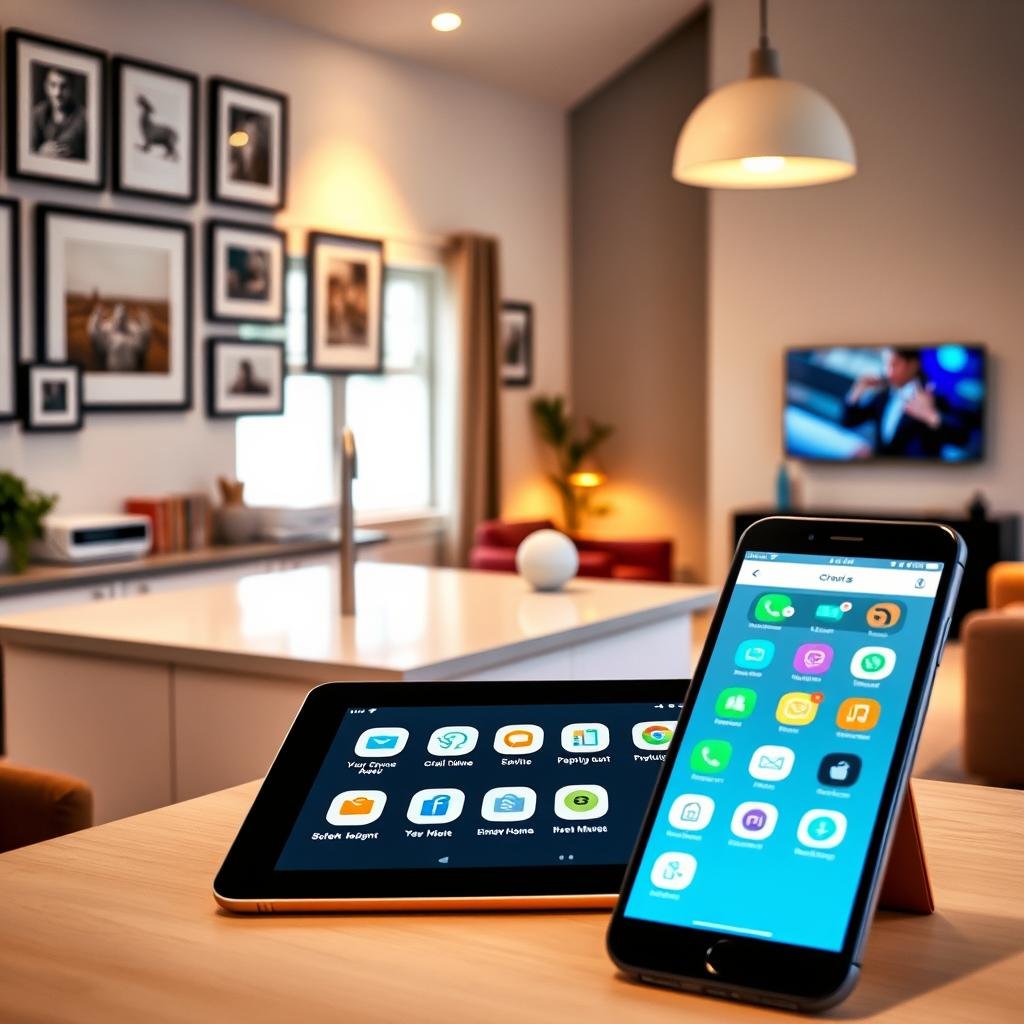Juggling work, kids, and daily responsibilities can feel overwhelming. Over half of working parents struggle to keep their households running smoothly, according to Pew Research. But there’s a better way to create balance.
When everyone pitches in, homes become more organized and less stressful. Shared responsibilities not only lighten the load but also strengthen bonds. You’ll discover how simple teamwork transforms chaotic spaces into peaceful ones.
Our proven strategies help busy households thrive. From chore charts to weekly planning sessions, small changes make a big difference. Ready to reclaim your time and create harmony?
This guide reveals practical solutions for modern life. You’ll learn how to distribute tasks fairly while making space for what matters most. Let’s turn daily challenges into opportunities for connection.
Why Involving Family Members in Home Management Matters
What if chores became moments of connection instead of conflict? When everyone contributes, you create more than order—you build trust and teamwork. Research proves it: households that work together thrive emotionally and practically.
The power of teamwork
Dividing tasks does more than lighten your load. A UAlbany study found kids in structured routines show 30% better emotional stability. Parents report 42% less burnout when chores are shared. Small efforts yield big rewards:
- Stronger bonds: Collaborative tasks deepen communication.
- Life skills: Kids learn responsibility through action.
- Less stress: Shared accountability reduces tension.
Numbers don’t lie
89% of harmonious homes hold weekly check-ins. These aren’t just meetings—they’re chances to celebrate progress and adjust plans. Turn chaos into calm by making participation rewarding. Start small: assign tasks based on strengths, not age.
Remember, a happy home isn’t spotless—it’s supportive. When everyone pitches in, you gain time for what truly matters.
Creating a Family-Centered Home Management Plan
44% of caregivers feel overwhelmed—but a shared plan changes everything. Start by identifying what truly matters to your household. A little teamwork turns stress into progress.

Assessing household needs and priorities
Try this 5-question audit to spot pain points:
- Which tasks cause the most stress weekly?
- What values (like sustainability) should chores reflect?
- Which zones (urgent vs. long-term) need attention?
The “3 Zones” method helps balance immediate fixes with bigger goals. For example, laundry might be urgent, while organizing the garage is important but not pressing.
Setting collective goals for a well-managed home
Turn chores into wins with a visual goal board. Kids contribute more when they see progress. Try the Family MVP system—celebrate whoever goes above and beyond each week.
Match tasks to strengths. A creative teen might design meal plans, while a detail-oriented adult handles budgets. This approach makes responsibilities feel rewarding, not tedious.
Effective Communication Strategies for Family Involvement
Clear communication turns household tasks into teamwork triumphs. Over 70% of caregivers commit long-term, making open dialogue essential. With the right strategies, even tough conversations become opportunities to grow closer.

Holding Productive Family Meetings
Master the Round Robin technique—give each person equal airtime. Start with wins (“I loved how you…”) before tackling tasks. Keep meetings under 15 minutes to hold attention.
Try a Solution Jar: Let kids drop creative chore ideas inside. Review them together weekly. This simple process builds buy-in and fun.
Active Listening and Conflict Resolution
Create family user manuals—notes on how each member prefers feedback. Use phrases like “I notice” instead of “You never” to defuse tension.
Weekly check-ins prevent 80% of conflicts. Listen first, then problem-solve as a team. When everyone feels understood, family dynamics improve naturally.
Task Delegation: Matching Responsibilities to Family Members
The secret to stress-free living starts with smart task delegation. When assignments align with abilities, even mundane chores feel rewarding. Our proven methods turn resistance into enthusiasm.

Age-appropriate chores for children
Toddlers can sort toys while teens handle meal prep—our customizable chart grows with your kids. Start small: 2-3 year olds love matching socks, while 6-8 year olds excel at pet care.
The Superpower Sorting method makes delegation empowering. Creative kids design chore charts, while natural organizers manage schedules. Rotate less popular tasks using our fun Task Lottery system.
Leveraging individual strengths and interests
60% of seniors need help with daily tasks—this approach works across generations. Tech-savvy teens might manage grocery apps, while grandparents share cooking wisdom.
Try these winning strategies:
- Use printable contracts to make commitments official
- Pair music lovers with playlist-making for chore time
- Let sports fans track progress with scoreboard visuals
When tasks match passions, responsibilities feel like privileges. Your household becomes a team where everyone plays their perfect position.
Building Routines That Work for Everyone
Your home environment thrives on rhythms, not rigid rules. The Princeton study proves it—clutter cuts productivity by 20%. But with smart systems, you reclaim time and peace.

Daily and weekly chore schedules
Design Rhythm Routines that match natural energy peaks. Morning people might tackle laundry early, while night owls organize after dinner. Try these proven tactics:
- Apply the 80/20 rule: Focus on tasks creating biggest impact first
- Use magnetic boards for adjustable visual schedules
- Slot 5-minute Micro-Routines between activities (e.g., quick toy bin tidy-up)
Flexibility vs. consistency in family routines
Protect 20% of your schedule as Flex Zones for spontaneity. Maybe pizza nights replace planned meals when weeks get hectic. Balance structure with joy—kids follow routines better when they include fun.
Remember: Great management adapts to real life. When systems serve your family instead of controlling it, everyone wins.
Involving Family Members in Meal Planning and Preparation
Turn kitchen chaos into quality time with smart meal strategies. The International Journal study reveals households that plan meals together see 38% lower obesity rates. When everyone participates, you boost health while strengthening bonds.

Make planning deliciously simple
Our Theme Night system removes decision fatigue. Try Taco Tuesdays or Stir-Fry Fridays—themed meals make grocery lists automatic. Kids love voting on weekly themes, creating instant buy-in.
Boost veggie intake with Junior Chef challenges. Let children pick one new ingredient each week. They’ll proudly eat what they helped select and prepare.
Cooking as connection
Batch cooking saves 7 hours weekly. Designate Sunday afternoons for chopping and prepping together. Measure ingredients aloud to sneak in math practice—cups and teaspoons teach fractions painlessly.
Explore cultures through recipes. Pick a country each month and research its traditional dishes. These culinary adventures expand palates and worldviews.
Start a family recipe scrapbook. Document favorite meals with photos and notes. Future generations will treasure these edible heirlooms.
Your kitchen can nourish bodies, minds, and relationships. With shared meal preparation, every dish becomes a memory in the making.
Teaching Financial Responsibility Through Home Management
Money talks at home can shape your child’s future financial confidence. Caregivers contribute $257B annually in unpaid labor—turn that effort into lasting money habits. This guide shows how everyday tasks build financial literacy naturally.
Start small. Grocery receipts become math lessons, and allowance systems teach real-world skills. When everyone understands household finances, you create both order and opportunity.

Including children in budgeting discussions
Transform price tags into teaching tools. Challenge kids to find the best deals during shopping trips. They’ll learn percentages while saving real dollars for your home.
Try the Family CEO system. Assign budget categories like “entertainment” or “pet supplies” to responsible teens. Monthly reviews turn abstract numbers into practical skills.
Shared responsibility for household expenses
Make bills visual with a “Team Challenge” board. Colorful charts show how turning off lights saves for family goals. The adapted 50/30/20 rule works wonders:
- 50% for needs (split among household members)
- 30% for wants (with kid-approved categories)
- 20% for savings (celebrate milestones together)
Allowance becomes a powerful tool when divided into save/spend/share jars. Watch young bankers grow with each intentional choice.
Using Technology to Streamline Family Home Management
Digital tools are revolutionizing how modern families stay organized and connected. The right apps turn chaotic schedules into smooth-running systems. Maple leads the pack—this all-in-one platform syncs chores, meals, and activities effortlessly.

Best apps for shared calendars and task lists
These top-rated options simplify daily routines while keeping data secure:
- Cozi: Color-coded calendars with medication reminders
- Todoist: Shared lists with achievement streaks for kids
- FamilyWall: Password-protected boards with photo verification
Try interactive QR code chore boards. Kids scan to mark tasks complete, earning digital rewards. Smart speakers add fun—set Alexa reminders with custom jingles for trash day.
Digital tools for meal planning and grocery coordination
Streamline your kitchen process with these game-changers:
- Paprika imports recipes and auto-generates shopping lists
- Out of Milk scans pantry items and alerts when staples run low
- Greenlight teaches financial literacy through digital allowance tracking
Balance is key. Designate tech-free zones like dinner tables. When digital tools serve your home instead of dominating it, everyone enjoys both efficiency and real connection.
Overcoming Common Challenges in Family Home Management
Every household faces bumps in the road—but the right approach turns struggles into growth. Nearly half of caregivers experience emotional distress when systems falter. The secret? Treating obstacles as chances to strengthen your team’s dynamics.

Turning resistance into participation
When chores feel like battles, try the 5 Why’s method. Ask why someone avoids a task until you uncover the real reason. Maybe laundry overwhelms because sorting isn’t taught.
Task Trade Days work wonders too. Let members swap disliked duties monthly. The garbage-taker-out might happily fold towels instead. Rotations prevent burnout while keeping the home running smoothly.
Creating balanced workloads
Energy mapping reveals natural fits. Night owls handle after-dinner cleanup while early birds manage breakfast prep. This respects everyone’s rhythm.
Try these reset rituals when stress builds:
- 15-minute power cleanups with upbeat music
- Weekly “thank you” notes for contributions
- Visual charts showing how efforts help the whole team
Remember, perfection isn’t the goal—progress is. Small adjustments create big impact over time. Your household isn’t just maintaining spaces; you’re building lifelong cooperation skills.
Celebrating Success and Maintaining Motivation
Small wins build big victories in your household journey. Research shows 89% of thriving homes celebrate progress regularly. Recognition fuels ongoing teamwork and joy.
Try a “Win Wall” to display completed projects. Use photos or colorful sticky notes. This visual reminder boosts morale and shows how far you’ve come.
Weekly “Progress Parties” make achievements fun. Dance to a victory song or share high-fives. Non-material rewards like choosing the weekend movie work wonders too.
Rotate your “MVP” spotlight monthly. Highlight different contributions, from laundry sorting to joke-telling during chores. Seasonal check-ins help refresh goals while acknowledging growth.
Remember, the quality of your teamwork matters more than perfection. Each celebration strengthens bonds and keeps motivation high for the next challenge.
